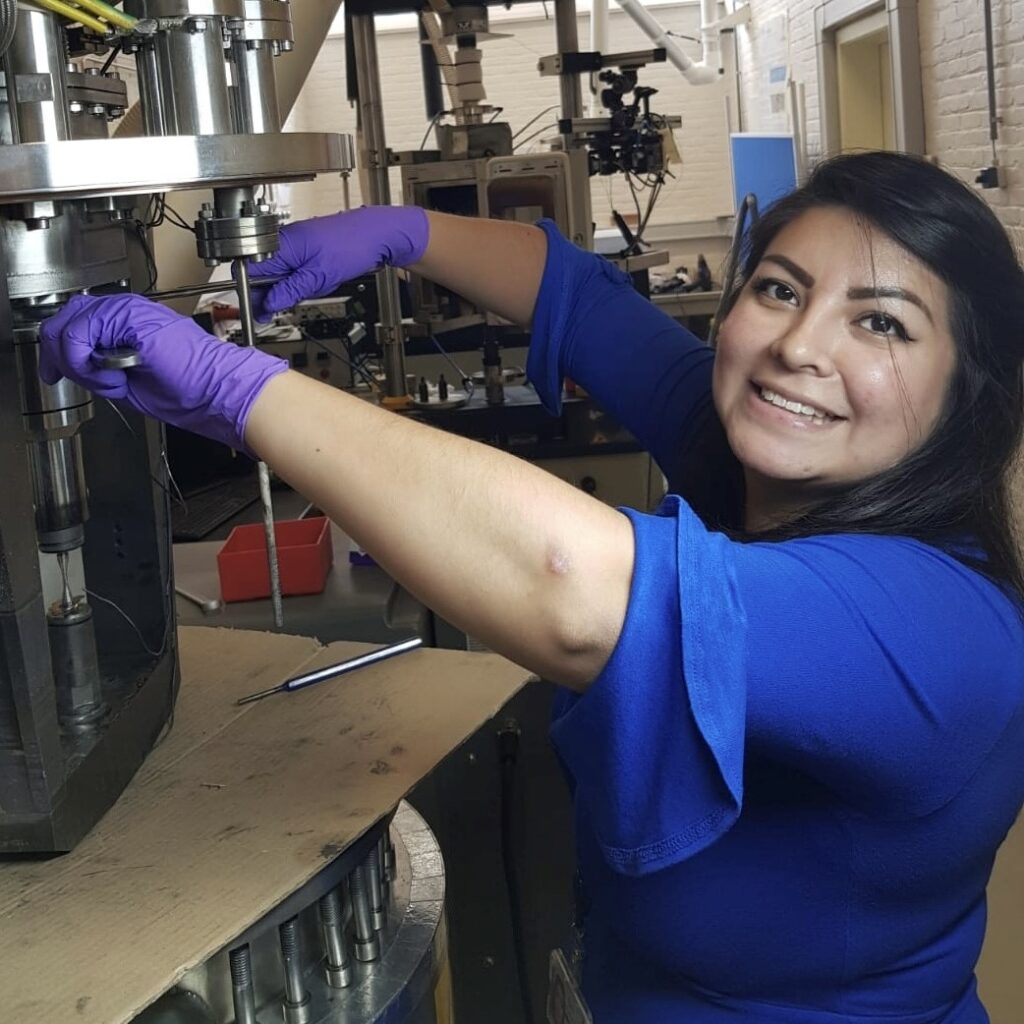Anthony Waked is a ONE Activist from Belgium.
One of the pillars of the European Week of Action for Girls (EWAG) is advocating for the right to inclusive and quality education. It’s a right that seems like an unattainable privilege to almost 130 million girls around the globe. The situation is particularly severe for girls who live in conflict zones, where they are more than twice as likely to be out of school than girls living elsewhere.
But uplifting young girls and their aspirations can have a major impact on their lives and the world. Working in the STEM field, I’ve seen that to hold true for many women in STEM.
I met with women at the Belgian Nuclear Research Centre (SCK CEN), who are sharing their inspirations, achievements, and challenges as women in STEM.
Keep reading to find out what they had to say.
Noelia, a nuclear engineer

Noelia is a Mexican nuclear engineer completing her Ph.D. at SCK CEN and Katholieke Universiteit Leuven. Her research focuses on materials used to build nuclear reactors – a crucial component for sustainable nuclear power and for other nuclear applications in medicine and healthcare.
In her internship at the International Atomic Energy Agency (IAEA), she is proud to have helped improve a tool for the management of spent nuclear fuel and saw it deployed in countries around the world.
Noelia’s journey in STEM was inspired by her mother, an engineer, who overcame challenges as a woman in STEM.
“As the only woman in her class, her university didn’t have bathrooms for women. Similarly, at work, her company wouldn’t send her on travel missions because it was more expensive to book her a separate hotel room than having two men share a single one,” Noelia shared about her mother’s experiences.
Her mother’s resilience and determination instilled in her the belief that she too could conquer any obstacle.
And Noelia wants to share some of that resilience and determination with the next generation of girls in STEM.
“Believe in yourself and know that you can do it! You might still need to fight against cultural or societal expectations, but you can learn to find the path of least resistance,” she shared. “Stay close to those who empower you and steer clear from those who don’t see your worth. Let those see you shine from afar.”
Silvana, a space researcher

Originally a radiation therapist from Portugal, Silvana switched careers from working in cancer clinics to being a doctoral researcher at SCK CEN and the University of Ghent. Her research aims to understand what happens to the immune system of astronauts in space when exposed to stress, radiation, and altered gravity conditions. “My research may also help people on Earth who suffer from immune-related disorders,” she added.
“Academia struggles with representation in general,” Silvana said. “I remember being at a debate once where women lamented how underrepresented they were in management positions within their research institutions.”
“This disparity can manifest in subtle ways, such as unrealistic meeting hours that don’t align with family life. Things like this discourage many talented women from advancing professionally, and they are so ingrained in our institutions.”
Silvana shared some advice for girls looking to enter the STEM world. “Stay curious, and stay persistent,” she said. “Maybe your path is not as linear as that of people around you, or maybe you don’t have a lot of role models to look up to. But there will always be time to start and follow a dream.”
Sita, a radiation protection researcher

Before coming to Belgium, Sita worked in Indonesia as a university lecturer in a nuclear engineering program, where her support and guidance helped students receive scholarships and admissions to pursue their dream careers.
Today, she is a doctoral researcher at SCK CEN and Université Libre de Bruxelles, focusing on finding better ways to estimate the radiation dose received by workers exposed to neutron radiation.
Sita’s original inspiration to pursue this career path are the pioneering radioactivity scientists and nobel laureate couple Marie and Pierre Curie. “I also married my colleague researcher, with whom I share a passion for science and service to society,” she said.
On the challenges she faced during her earlier studies, Sita said, “There was this belief that engineering is not a field for women, let alone nuclear engineering. Women were expected to pursue degrees in nursing or literature, instead.”
As for her advice to young girls, Sita said, “Follow what your heart desires, take risks, and be brave enough to adapt and compromise. Do not worry too much: remember that each of us has unique roles and contributions to society.”
Women need a bigger role in STEM
Noelia, Silvana, and Sita’s stories offer us reasons to celebrate the contributions of bright scientists to research and technologies that drive our societies forward. But they also serve as reminders that the ground is not yet level for many women in STEM.
While women account for 29.4% of the entry-level STEM workforce, they only account for 17.8% and 12.4% of high-level leadership roles such as vice presidents and CEOs, respectively. Something ought to budge, and it’s surely not women’s place in STEM.
As my fellow ONE Activists share these messages with change-makers during the European Week of Action for Girls, one message is clear: We do not want just a seat at the table for girls and women. We want the table to be dismantled and rebuilt with women and girls in mind.
Feeling inspired?
See some of our ongoing campaigns and learn more about how you can lend your voice to fight against extreme poverty.
